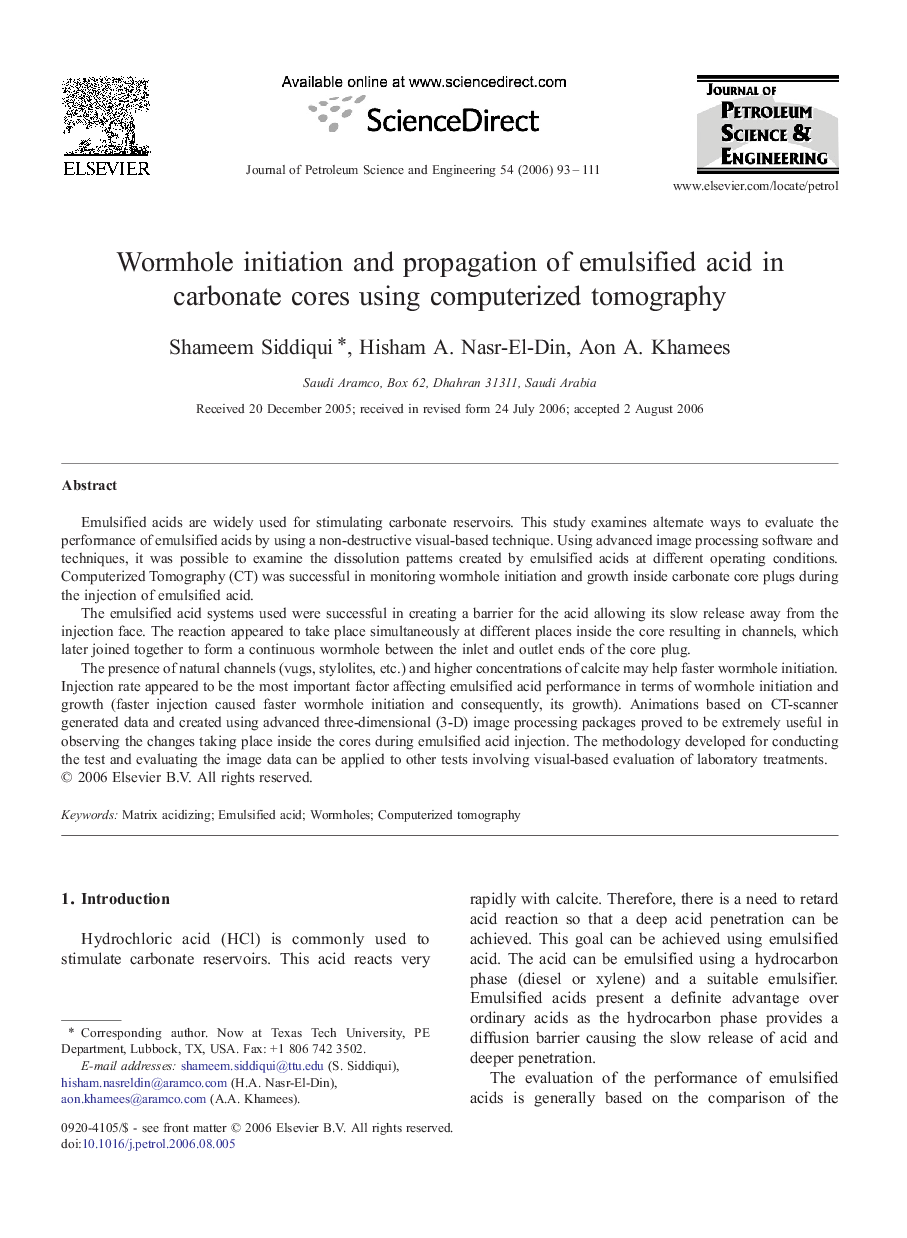| Article ID | Journal | Published Year | Pages | File Type |
|---|---|---|---|---|
| 1756506 | Journal of Petroleum Science and Engineering | 2006 | 19 Pages |
Emulsified acids are widely used for stimulating carbonate reservoirs. This study examines alternate ways to evaluate the performance of emulsified acids by using a non-destructive visual-based technique. Using advanced image processing software and techniques, it was possible to examine the dissolution patterns created by emulsified acids at different operating conditions. Computerized Tomography (CT) was successful in monitoring wormhole initiation and growth inside carbonate core plugs during the injection of emulsified acid.The emulsified acid systems used were successful in creating a barrier for the acid allowing its slow release away from the injection face. The reaction appeared to take place simultaneously at different places inside the core resulting in channels, which later joined together to form a continuous wormhole between the inlet and outlet ends of the core plug.The presence of natural channels (vugs, stylolites, etc.) and higher concentrations of calcite may help faster wormhole initiation. Injection rate appeared to be the most important factor affecting emulsified acid performance in terms of wormhole initiation and growth (faster injection caused faster wormhole initiation and consequently, its growth). Animations based on CT-scanner generated data and created using advanced three-dimensional (3-D) image processing packages proved to be extremely useful in observing the changes taking place inside the cores during emulsified acid injection. The methodology developed for conducting the test and evaluating the image data can be applied to other tests involving visual-based evaluation of laboratory treatments.
